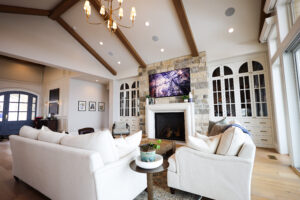Thinking about mounting your TV and wondering what the best options are for style, functionality, and viewing experience? With so many mounting styles available, it’s natural to have questions. Maybe you’re after a sleek, flush-to-the-wall look that keeps the focus on your room’s decor. Or maybe you need a mount that allows you to adjust angles for perfect viewing from anywhere in the room. In this guide, we’ll break down everything you need to know about custom-mounted TVs, from flush and surface mounts to flexible, articulating options.
Types of Custom TV Mounts
Choosing the right mount begins with understanding the different styles. Each type is tailored to your needs, whether it’s design, accessibility, or flexibility.
Flush Mount TVs
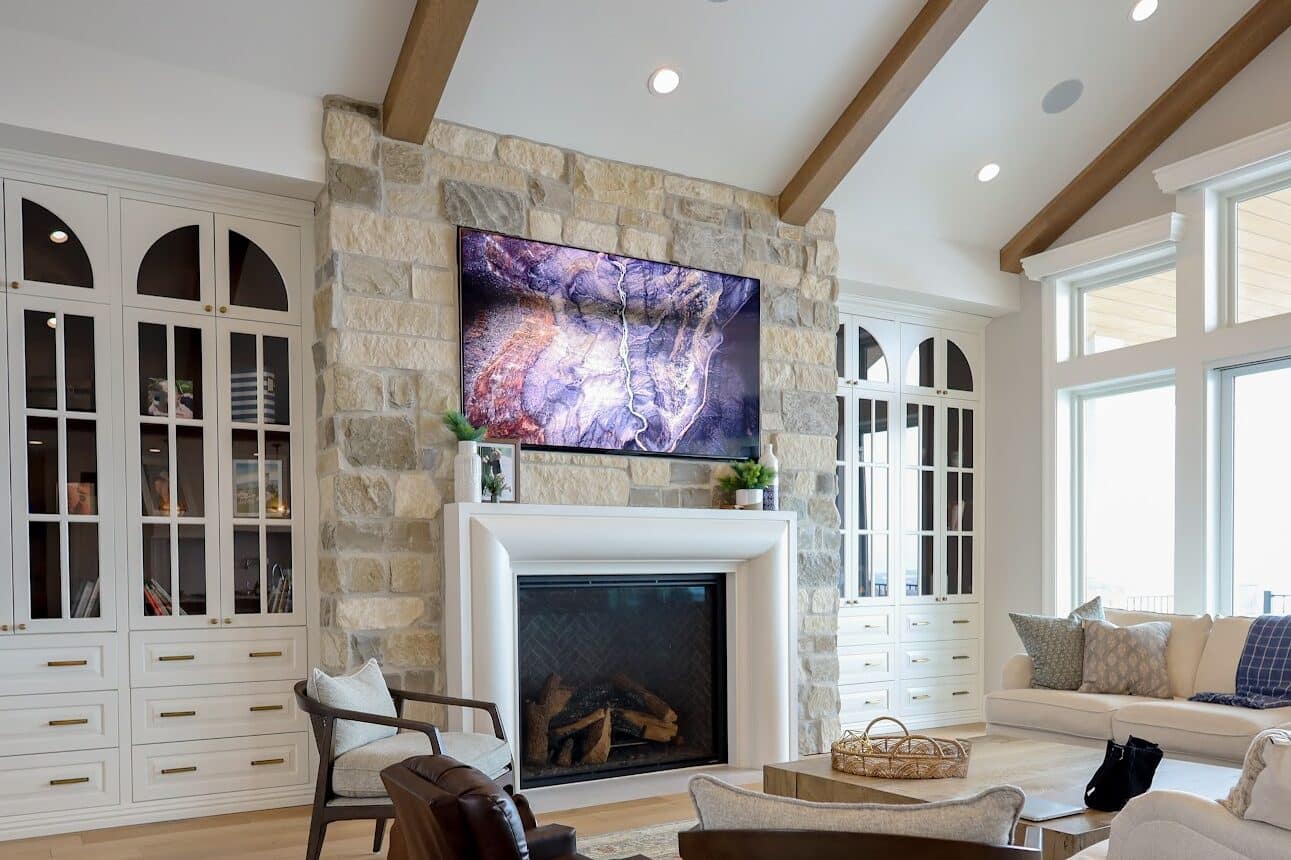
Flush mount TVs are a great choice for a clean, minimalist aesthetic. These mounts embed the TV into the wall, creating a seamless look that’s ideal for modern interiors. For homeowners interested in smart home technology and design, flush mounts can add to the futuristic look and feel of a home.
- Design Appeal:
Flush mounting perfectly levels the TV with the wall, eliminating gaps and bulky hardware. This setup complements clean lines and minimalistic spaces, making the TV appear as a natural part of the wall. - Installation Requirements:
This style requires precision and professional planning. Collaborating with contractors, framers, and electricians ensures the wall can accommodate the recessed TV and its wiring. - Functionality:
Pairing a flush mount with an articulating bracket adds flexibility, allowing you to pull the TV out for access to ports or cables without compromising the streamlined appearance.
Flush mounts are an excellent choice for living rooms, bedrooms, or home theaters where the TV is intended to blend into the decor.
Surface Mount TVs
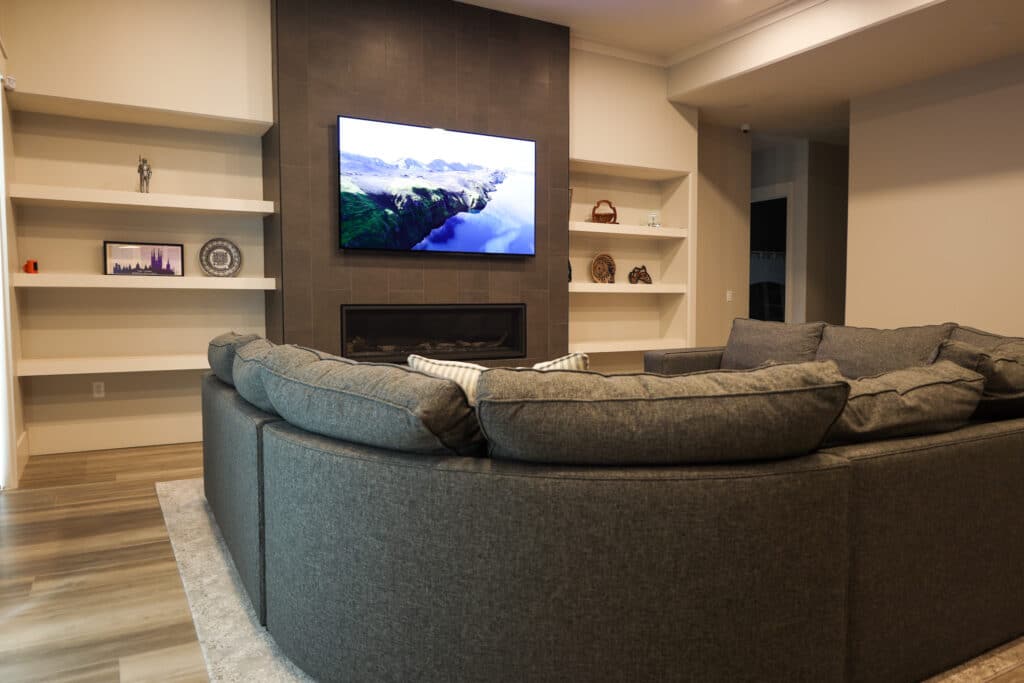
Surface mounts are a versatile and straightforward option, where the TV is installed directly onto the wall. While the TV protrudes slightly, it still maintains a clean and modern look.
- Advantages:
- Quick and easy to install without major wall modifications.
- Compatible with almost any wall type, from drywall to brick.
- Suitable for renters or spaces where permanent installations aren’t an option.
- Design Impact:
Although the TV extends a few inches from the wall, using low-profile brackets can minimize this effect, maintaining a sleek and professional appearance.
Surface mounts can be a good choice for households looking for simplicity or those who may want to move the TV setup in the future.
Articulating Mount TVs
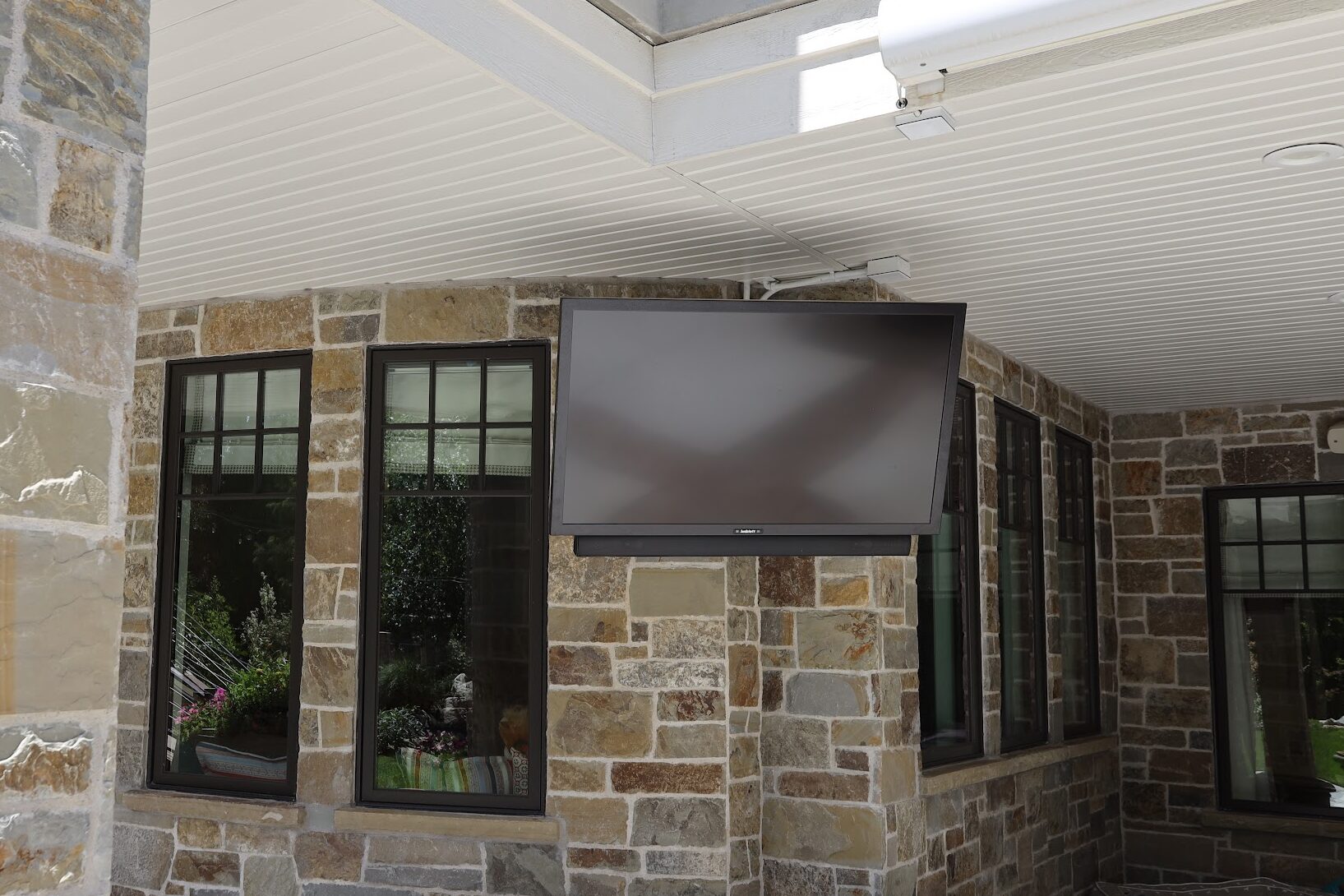
Articulating mounts are all about flexibility. These mounts allow you to swivel, tilt, or pull the TV away from the wall, offering different positioning options.
- Key Features:
- Adjust viewing angles to reduce glare or accommodate seating arrangements in multiple areas.
- Pull the TV forward for maintenance, such as connecting new devices or troubleshooting.
- Perfect for rooms with open layouts or unconventional seating arrangements, such as combined living rooms and dining areas.
- Practicality:
Articulating mounts are a versatile solution for both residential and commercial spaces. They are especially useful in multi-functional rooms where the TV needs to be visible from different areas.
This mount type is also a popular addition to flush-mounted setups, as it adds functionality without sacrificing aesthetics.
How to Choose a TV Mounting Style
Now that you have a better idea of the main types of TV mounts, let’s get into some of the factors to consider when choosing a mounting style.
Aesthetics and Room Design
- Do you want the TV to blend into the background or stand out as a centerpiece?
- Consider the room’s decor—flush mounts suit minimalistic designs, while custom frames or specialty TVs can complement traditional or eclectic styles.
Viewing Experience
- Think about seating arrangements and viewing angles. For example, a bedroom setup may benefit from an articulating mount that can tilt downward for comfortable viewing from the bed.
- Account for lighting conditions, such as natural light from windows, to minimize glare.
Accessibility
- How often will you need access to the back of the TV to connect devices or perform maintenance? Articulating mounts or recessed setups with pull-out functionality provide easy access.
Space and Room Layout
- In smaller theater rooms, flush mounts can save space and create a streamlined look.
- For open-concept layouts, articulating mounts make the TV visible from multiple angles.
One option for those with trouble making decisions is to consult with a professional installer or interior designer. They can offer recommendations based on your needs and space.
Customization Options for TV Mounts
For the design-focused homeowner, customization options for TV mounts can improve the look and functionality of their setup. Some popular options include:
Custom Frames
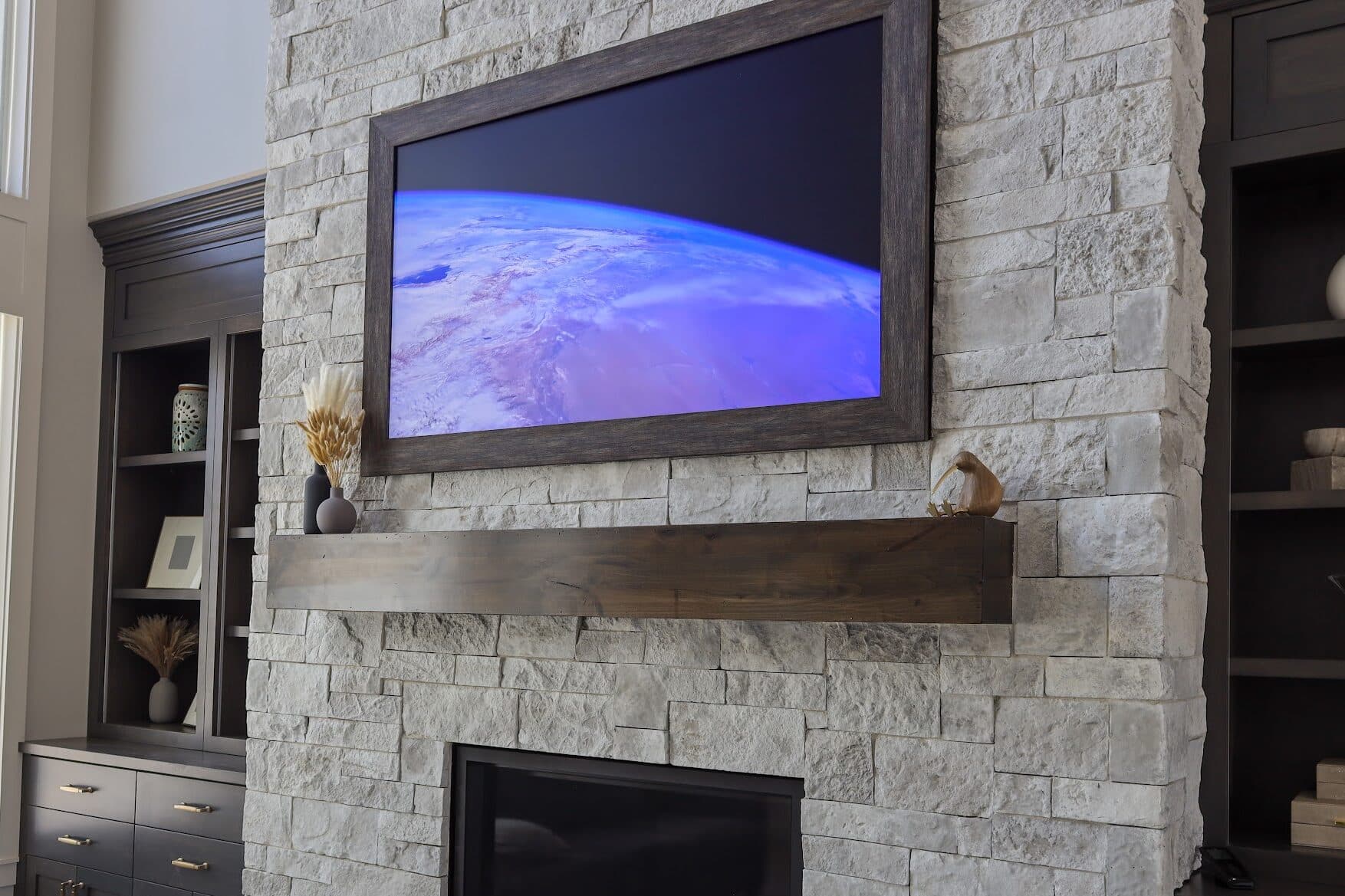
Transform your TV into a piece of art by adding custom frames. Popular materials include:
- Wood: Create a classic look that blends with cabinetry or furniture. Choose from a variety of finishes, such as natural wood, stained, or painted.
- Metal: Go for a sleek, modern aesthetic with brushed aluminum or steel finishes. Some companies offer custom color options as well.
Specialty TVs
Some TVs come with built-in customization options, such as:
- Samsung Frame TVs: These TVs display artwork or photos when turned off, functioning as decorative elements.
- Seura TV Mirrors: Perfect for bathrooms or bedrooms, these TVs double as mirrors when not in use.
- Sony TVs with Leon Frames: These TVs combine superior picture quality with customizable frames for a polished, artistic look.
These options can change the TV from a functional appliance to a stylish feature that complements your space.
DIY or Professional Installation?
Deciding between a DIY TV mounting approach and professional installation depends on the complexity of the setup and your confidence in handling tools.
DIY Installation
- Pros:
- Cost-effective for basic installations, such as surface mounting.
- Ideal for those with experience using tools and measuring accurately.
- Cons:
- Requires precise measurements to avoid uneven placement.
- Limited to simpler mounts—flush and articulating setups often require expertise.
Professional Installation
- Pros:
- Guarantees a secure and perfectly aligned installation.
- Professionals handle complex setups, such as recessed mounts or custom wiring.
- Saves time and eliminates the guesswork.
- Cons:
- Higher upfront cost.
Given the benefits of professional installation, it’s often the best choice for ensuring your TV is securely and aesthetically mounted. However, if you’re confident in your DIY skills and have a basic setup, tackling the project yourself can be a cost-effective option. If you need help installing a TV mount or integrating a smart TV into your smart home, contact AIS to schedule a professional consultation.
Need Help Choosing or Installing a Custom TV Mount? AIS can Help
Choosing the right TV mount can create a viewing experience that works beautifully with your space and style. From flush mounts that blend seamlessly into your walls to articulating mounts that give you flexibility, the right setup can truly elevate your room. And with options like custom frames and mirror TVs, your television can become an integrated design feature, not just an appliance. At AIS, we specialize in creating smart homes that are tailored to our clients’ needs. Our team of experts can help you design and install a custom TV mount for your home. Contact us today or use our budget calculator to get an idea of the cost of your project.


